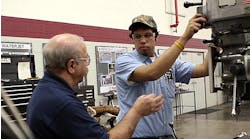In retrospect, it was a simple proposition, simple to understand and to apply: capital invested in labor would increase output, which would enhance revenue, which would help to recover the investment and draw a marginal profit.
That was the theory, but more than that it became a principle. One person or enterprise hired others for their labor, and paid those workers out of the profit they gained by marketing the output of that labor. Successful employers would add more capital, and ingenuity, to the effort, in the expectation of increasing their ROI.
Clever employers made whatever adjustments they could to keep employees content and effective. Clever workers applied themselves in ways that would enhance the value of their work and improve their opportunity for better compensation.
Over the past 800 years or so this principle brought humanity out of a semi-civilized state, and expanded health, wealth, and opportunity. Of course, before the principle became practice there were many centuries of only modest improvement in health and wealth for the vast majority of people, and isolated examples of wealth that did more to aggravate than to demonstrate how human life might be improved. The principle demonstrated that acting reasonably for one’s own reward could benefit others, too.
It seems I’ve been writing about employment data for the past seven years, but anyone paying attention to economic trends realizes that unemployment has become irresolvable: the most recent U.S. Dept. of Labor survey indicated that 117.7 million Americans are working at full-time jobs, which is down from 121.9 million in 2007. That is, just 63% of all citizens are working full-time to gain better opportunities for themselves, improving their own lives, and (according to the principle) contributing to the improvement of other lives, too. Sadly, the percentage of individuals who are not working and not trying to find work hovers at about 12.7%.
Typically, such an analysis takes an ideological turn that I hope to avoid. Employers and their cohort argue that the cost of employing workers is too great. They find it impossible to remain globally competitive while conforming to current wage and benefit requirements. They see their enterprises as fixtures for revenue, not as avenues to opportunity.
Workers and their cohort argue that employers must take a greater responsibility for workers’ current and long-term welfare; they want their risks to be managed, even at the cost of diminished opportunity for greater reward.
When the conundrum of unemployment first came to my attention seven years ago I viewed it as inefficiency: a lack of skilled workers for available tasks, a poor application of resources, and an over-reliance on regulation to set the standards for performance and operation.
It remains all those things. But what is worse now is my realization that the understanding of ‘work’ as means of growth has been lost. We have no unifying principle.








